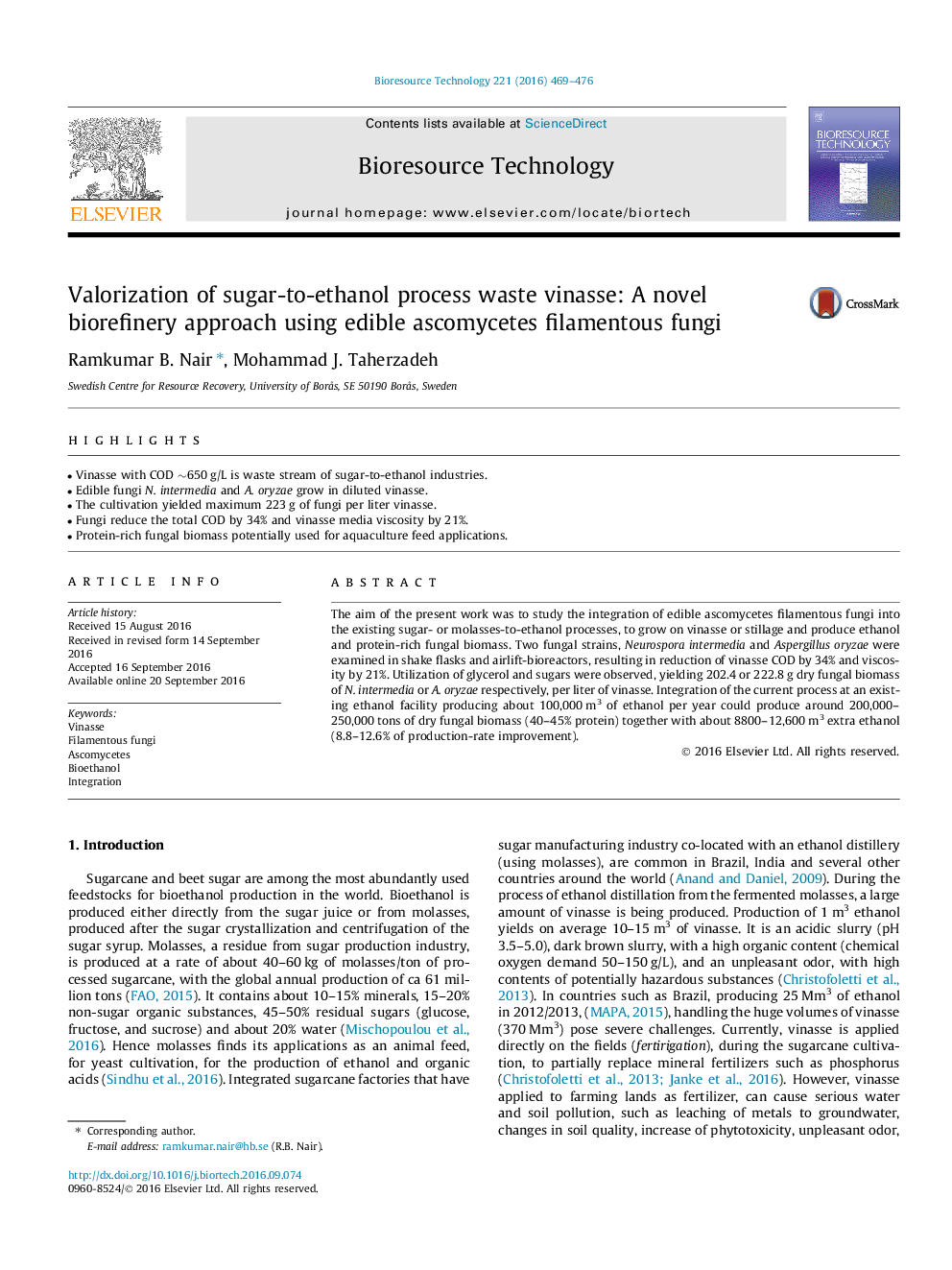| کد مقاله | کد نشریه | سال انتشار | مقاله انگلیسی | نسخه تمام متن |
|---|---|---|---|---|
| 4998065 | 1459922 | 2016 | 8 صفحه PDF | دانلود رایگان |
- Vinasse with COD â¼650Â g/L is waste stream of sugar-to-ethanol industries.
- Edible fungi N. intermedia and A. oryzae grow in diluted vinasse.
- The cultivation yielded maximum 223Â g of fungi per liter vinasse.
- Fungi reduce the total COD by 34% and vinasse media viscosity by 21%.
- Protein-rich fungal biomass potentially used for aquaculture feed applications.
The aim of the present work was to study the integration of edible ascomycetes filamentous fungi into the existing sugar- or molasses-to-ethanol processes, to grow on vinasse or stillage and produce ethanol and protein-rich fungal biomass. Two fungal strains, Neurospora intermedia and Aspergillus oryzae were examined in shake flasks and airlift-bioreactors, resulting in reduction of vinasse COD by 34% and viscosity by 21%. Utilization of glycerol and sugars were observed, yielding 202.4 or 222.8Â g dry fungal biomass of N. intermedia or A. oryzae respectively, per liter of vinasse. Integration of the current process at an existing ethanol facility producing about 100,000Â m3 of ethanol per year could produce around 200,000-250,000Â tons of dry fungal biomass (40-45% protein) together with about 8800-12,600Â m3 extra ethanol (8.8-12.6% of production-rate improvement).
Journal: Bioresource Technology - Volume 221, December 2016, Pages 469-476
